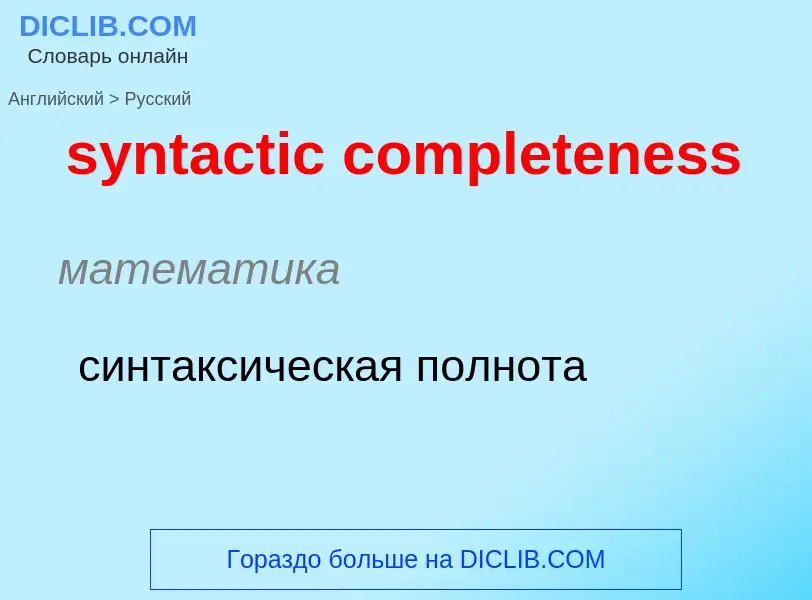Tradução e análise de palavras por inteligência artificial ChatGPT
Nesta página você pode obter uma análise detalhada de uma palavra ou frase, produzida usando a melhor tecnologia de inteligência artificial até o momento:
- como a palavra é usada
- frequência de uso
- é usado com mais frequência na fala oral ou escrita
- opções de tradução de palavras
- exemplos de uso (várias frases com tradução)
- etimologia
syntactic completeness - tradução para russo
математика
синтаксическая полнота
математика
сильная полнота
математика
дедуктивная полнота
Definição
Wikipédia
In the mathematical area of order theory, completeness properties assert the existence of certain infima or suprema of a given partially ordered set (poset). The most familiar example is the completeness of the real numbers. A special use of the term refers to complete partial orders or complete lattices. However, many other interesting notions of completeness exist.
The motivation for considering completeness properties derives from the great importance of suprema (least upper bounds, joins, "") and infima (greatest lower bounds, meets, "") to the theory of partial orders. Finding a supremum means to single out one distinguished least element from the set of upper bounds. On the one hand, these special elements often embody certain concrete properties that are interesting for the given application (such as being the least common multiple of a set of numbers or the union of a collection of sets). On the other hand, the knowledge that certain types of subsets are guaranteed to have suprema or infima enables us to consider the computation of these elements as total operations on a partially ordered set. For this reason, posets with certain completeness properties can often be described as algebraic structures of a certain kind. In addition, studying the properties of the newly obtained operations yields further interesting subjects.

